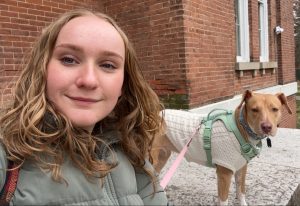Mitchell
Chapter 1 Introducing GIS Analysis
This chapter starts with a definition of GIS Analysis, it states ” GIS Analysis is a process for looking at geographic patterns in your data and relationships between features.”. This first paragraph also gives examples of how you may do this could be a very simple like by creating a map or a complex process “involving models that mimic the real world by combining many data layers”. To begin an analysis you must before anything else figure out what information you need, this is often formatted as a question. Other factors you must consider is how the analysis will be used and by who. To determine what method you will use you must know the type of data and features you are working with, you must also factor in your original question and what the analysis will be used for. Results of the analysis can be displayed in maps, values in a table, or a chart. The next section of this chapter discusses different types of geographic features. Discrete features, continuous phenomena, and features summarized by area. There are two ways of mapping geological features: Vector and raster. In the vector model feature shapes are determined by X,Y locations in space, whereas the raster model features are represented as a matrix of cells in a continuous space. The book details that while any type feature. can be represented in either model is it most common for discrete features and data summarized by area to be represented in vector, and for continuous numeric values to be represented using the raster model. Continuous categories can be represented as vector or raster. There are 5 types of geographic attribute values: categories, ranks, counts, amounts, and ratios. You can identify these values in a geographic feature to help you determine what the feature is, to describe it, or to understand the represented magnitude associated with the feature. Categories and ranks are not continuous values. Counts, amounts, and ratios are continuous values.
Chapter 2 Mapping Where Things Are
The first paragraphs of this chapter explain the importance of investigating the patterns of multiple features on a given map. It gives the example of police using GIS in this way to track crime and decide where to assign patrols. Which features to display and how to display them is determined by the information you need and how the map will be used. Before creating your map you must have geographic coordinates assigned to the features you wish to map. The brunt of this work is done by the GIS. An optional step before creating your map is assigning a category attribute with a value to each feature. To map single type features you simply draw all features using the same symbol. This chapter explains that GIS stores the location of each feature as a pair of geographic coordinates or as a set of coordinate pairs that define its shape whether that be a line or an area. Using a subset when mapping your features can help to reveal patterns that are less apparent when all features are mapped. Mapping by category by allocating different symbols for each category can help you to understand how a place functions. You can also display features by type to further reveal different patterns since features could belong to more than one category. When mapping using categories sometimes it is helpful to create separate maps for each category as the features may be too close together and make them hard to distinguish one from another. When mapping multiple categories it is important to map no more than 7 on a single map. The amount of categories reasonable to show on a single map can also be affected by map scale, and the features being mapped. If you have more than 7 categories sometimes you can make generalized groups for the categories to make the patterns easier to see. It is helpful to the people who will be looking at your map if you map recognizable landmarks for example: major roads or highways, administrative or political boundaries, locations of towns or cities, or major rivers.
Chapter 3 Mapping the Most and Least
This chapter begins by discussing how mapping the most and least is helpful to find places that meet ones criteria or to see the relationships between places. Mapping features based on quantities rather than just the location of the features adds another level of information to the map you are making. Quantities associated with discrete features, continuous phenomena or data summarized by area can be mapped. Count: The actual number of features on the map. Amount: the total of a value associated with each feature. Counts and amounts can be mapped for discreet features or continuous phenomena. Using counts or amounts is not suitable if you are summarizing by area as it can skew the pattern. It is recommended to use ratios to represent the distribution of features. The most common ratios are averages, proportions, and densities. Ratios show you the relationship between two quantities. Ranks order features form high to low, and depict relative values, this is useful when the direct measurement is difficult. Counts, amounts, and ratios are usually grouped into classes whereas ranks must be mapped individually. If you are looking for features that meet specific criteria or are comparing features to a specific meaningful value you should create classes manually. But if you want to group similar values to look for patterns in the data you should use standard classification schemes. There are four standard classification schemes Natural Breaks, Quantile, Equal Interval, and standard division. To determine which scheme to use you must create a bar chart with the horizontal axis showing the attribute values and the vertical axis showing the number of features having a particular value. There are 5 given options in GIS to create maps to show quantities graduated symbols, graduated colors, chart, contours, and 3D perspective views.











































